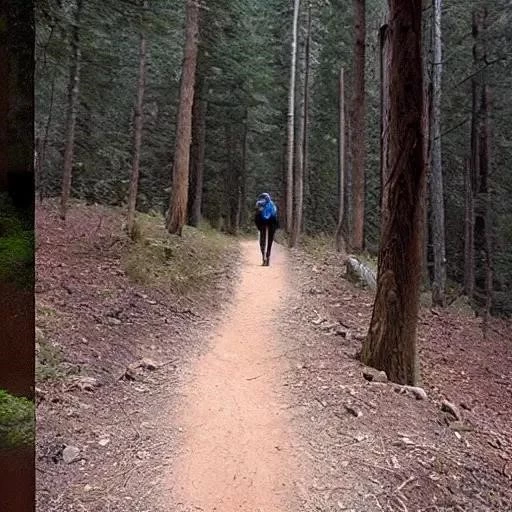Every seasoned hiker knows the thrill of conquering a long-anticipated trail, the satisfaction of reaching a summit, or the serene solitude found deep within a forest․ We implicitly trust the numbers etched onto trail markers and guidebooks, those seemingly definitive figures that promise a 5-mile loop or a challenging 20-mile thru-hike; But have you ever paused to ponder the intricate science and meticulous effort behind those measurements? The truth is, determining hiking trail distances is far from a simple task, involving a fascinating evolution of techniques, from ancient mapping to cutting-edge satellite technology․ Understanding this sophisticated process not only deepens our appreciation for the trails themselves but also illuminates the incredible precision guiding our outdoor adventures․
For centuries, the rugged beauty of untouched landscapes presented an immense challenge to cartographers and explorers․ Early methods were remarkably rudimentary, relying on paced estimates, the turning of a wagon wheel, or even the tedious process of chaining – literally laying out chains of a known length along a path․ These pioneering efforts, while foundational, were inherently prone to significant inaccuracies, influenced by terrain variations, human error, and the sheer physical exhaustion of the measurers․ Today, as we stand at the precipice of a new era in outdoor recreation, powered by unparalleled technological advancements, the methodologies for calculating trail lengths have undergone a dramatic transformation, promising greater accuracy, enhanced safety, and an ever-improving experience for every intrepid explorer․
Key Trail Measurement Techniques and Their Evolution
A concise overview of the methods used to determine hiking trail distances․
| Methodology | Description | Advantages | Disadvantages/Challenges | Typical Application/Era |
|---|---|---|---|---|
| Pacing & Chaining | Manual estimation by counting steps or laying out physical chains of known length along the path․ | Low-cost, no special equipment needed (historically)․ | Highly inaccurate, time-consuming, physically demanding, susceptible to terrain variation․ | Ancient to early 20th century surveying; occasional rough estimates today․ |
| Measuring Wheels (Odometer Wheels) | A wheel with a known circumference is rolled along the path, counting revolutions to calculate distance․ | More precise than pacing for relatively smooth surfaces; mechanically simple․ | Impractical for very rough, steep, or overgrown trails; can accumulate error on uneven ground․ | Roads, paved paths, some cleared trails; still used for specific, accessible projects․ |
| Topographic Maps & Manual Digitization | Measuring distances directly from paper maps using rulers, string, or specialized map wheels; later, digitizing paths from scanned maps․ | Provides a broad overview; foundational for early trail planning․ | Does not account for real-world elevation changes; accuracy limited by map scale and human interpretation․ | Mid-20th century planning; still a starting point for some projects․ |
| GPS (Global Positioning System) | Using satellite signals to precisely pinpoint a receiver’s location at regular intervals, then calculating the distance between these points․ | High accuracy (especially with differential GPS), real-time data, accounts for elevation changes, widely accessible․ | Signal interference in dense canopy or canyons, battery life, initial equipment cost․ | Modern trail mapping, personal navigation, data collection by volunteers and professionals․ |
| GIS (Geographic Information Systems) & Remote Sensing | Integrating GPS data with satellite imagery, aerial photography, and LiDAR (Light Detection and Ranging) to create highly detailed 3D models of terrain․ | Exceptional accuracy, comprehensive data analysis, efficient for large areas, predictive modeling․ | Requires specialized software and skilled operators, significant data processing power․ | Large-scale national park mapping, complex trail network planning, environmental impact assessments․ |
For further information on geographic information systems, visit the Esri GIS Hub․
The advent of the Global Positioning System (GPS) revolutionized trail measurement, transitioning us from laborious terrestrial methods to the remarkable precision of satellite-derived data․ By integrating insights from AI and sophisticated algorithms, modern GPS devices, often carried by dedicated trail crews or even everyday hikers, record a series of georeferenced points along a path․ These points, meticulously logged at frequent intervals, allow for the calculation of an incredibly accurate three-dimensional distance, factoring in not just horizontal displacement but also crucial elevation changes․ This accounts for the true effort expended on a climb, offering a far more realistic representation of a trail’s demands than a simple flat-map measurement ever could․ Imagine charting the serpentine ascent of California’s challenging Mount Whitney Trail; GPS technology captures every nuanced twist and formidable gain in elevation․
Beyond handheld GPS units, the frontier of trail mapping is increasingly dominated by Geographic Information Systems (GIS) and remote sensing technologies․ These powerful tools synthesize vast amounts of data—from high-resolution satellite imagery to LiDAR scans—to construct incredibly detailed digital elevation models of landscapes․ Organizations like the National Park Service and the Appalachian Trail Conservancy leverage GIS to manage vast networks of trails, identifying erosion-prone areas, planning maintenance, and ensuring consistent measurement across diverse terrains․ “The precision offered by current GIS platforms is unparalleled,” explains Dr․ Lena Petrova, a leading expert in geospatial analytics for conservation, “allowing us to model environmental impacts, predict usage patterns, and design sustainable trail systems with astonishing foresight․” This sophisticated approach not only calculates existing distances but also aids in the strategic planning of future trail expansions, fostering a proactive stewardship of our natural recreational assets․
The implications of these advanced measurement techniques extend far beyond mere numbers on a signpost․ They are fundamentally transforming how we experience and interact with the outdoors․ Accurate trail data empowers hikers to plan their trips with greater confidence, assess personal fitness requirements, and ensure safety through precise navigation․ For land managers, this data is an indispensable asset for resource allocation, emergency response planning, and mitigating environmental degradation․ Looking forward, the integration of real-time crowd-sourced data, enhanced AI-driven mapping, and even predictive analytics promises an even more dynamic and responsive approach to trail management․ Envision smart trails that adapt to environmental changes or provide personalized route recommendations based on a hiker’s experience level․






